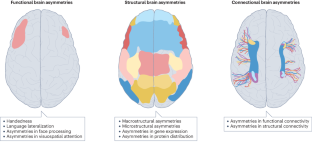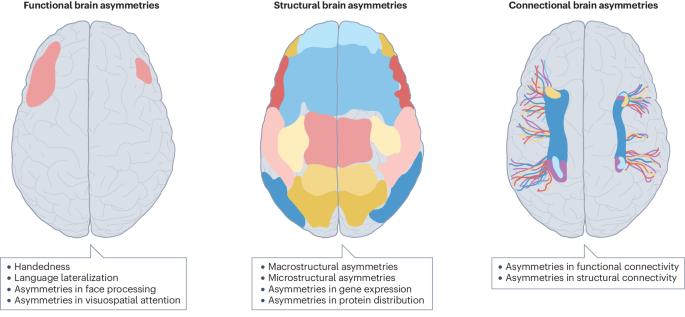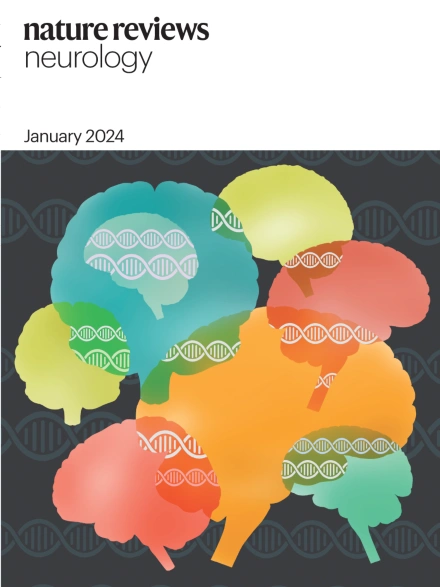大脑不对称的临床意义
IF 28.2
1区 医学
Q1 CLINICAL NEUROLOGY
引用次数: 0
摘要
没有两个人的大脑是相同的,随着精准医疗在神经病学领域的兴起,我们看到人们越来越重视了解大脑结构和功能的个体差异,这使得每个人的大脑都是独一无二的。大脑功能和结构的不对称性是大脑组织的基本原理,最近的研究表明,这些不对称性存在很大的个体差异,需要在临床实践中加以考虑。在本综述中,我们将概述大脑不对称性、这种不对称性的变化及其与临床的相关性。我们回顾了神经精神疾病、神经发育障碍以及特定学习障碍中大脑不对称的最新研究成果,重点关注大规模数据库研究和荟萃分析。我们还强调了不对称与神经退行性疾病症状发作的相关性及其对侧向治疗(包括脑刺激)的影响。我们的结论是,大脑不对称性的改变并不具有足够的特异性来作为诊断生物标志物,但在某些情况下可以作为有意义的症状或治疗反应生物标志物。基于这些见解,我们为神经科临床实践提供了一些建议。本文章由计算机程序翻译,如有差异,请以英文原文为准。


Clinical implications of brain asymmetries
No two human brains are alike, and with the rise of precision medicine in neurology, we are seeing an increased emphasis on understanding the individual variability in brain structure and function that renders every brain unique. Functional and structural brain asymmetries are a fundamental principle of brain organization, and recent research suggests substantial individual variability in these asymmetries that needs to be considered in clinical practice. In this Review, we provide an overview of brain asymmetries, variations in such asymmetries and their relevance in the clinical context. We review recent findings on brain asymmetries in neuropsychiatric and neurodevelopmental disorders, as well as in specific learning disabilities, with an emphasis on large-scale database studies and meta-analyses. We also highlight the relevance of asymmetries for disease symptom onset in neurodegenerative diseases and their implications for lateralized treatments, including brain stimulation. We conclude that alterations in brain asymmetry are not sufficiently specific to act as diagnostic biomarkers but can serve as meaningful symptom or treatment response biomarkers in certain contexts. On the basis of these insights, we provide several recommendations for neurological clinical practice. Functional and structural brain asymmetries are a fundamental principle of brain organization, and research suggests substantial individual variability in these asymmetries that needs to be considered in clinical practice. This Review provides an overview of brain asymmetries, variations in such asymmetries and their relevance in the context of clinical neurology.
求助全文
通过发布文献求助,成功后即可免费获取论文全文。
去求助
来源期刊

Nature Reviews Neurology
医学-临床神经学
CiteScore
29.90
自引率
0.80%
发文量
138
审稿时长
6-12 weeks
期刊介绍:
Nature Reviews Neurology aims to be the premier source of reviews and commentaries for the scientific and clinical communities we serve. We want to provide an unparalleled service to authors, referees, and readers, and we work hard to maximize the usefulness and impact of each article. The journal publishes Research Highlights, Comments, News & Views, Reviews, Consensus Statements, and Perspectives relevant to researchers and clinicians working in the field of neurology. Our broad scope ensures that the work we publish reaches the widest possible audience. Our articles are authoritative, accessible, and enhanced with clearly understandable figures, tables, and other display items. This page gives more detail about the aims and scope of the journal.
 求助内容:
求助内容: 应助结果提醒方式:
应助结果提醒方式:


